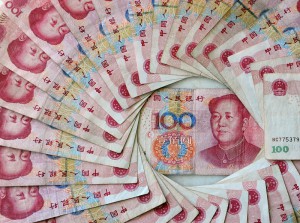HARBIN, Jan. 1 (Xinhua) — The bitter cold in Northeast China’s Heilongjiang Province, powerful enough to cause frostbite, is heating up the economy of the frozen land.
Harbin’s International Ice and Snow Festival, in trial operations, is drawing global tourists with its shimmering castles, huge towers and thrilling slides, all made of ice and snow.
The largest winter festival in China, the frozen structures have been built in the provincial capital every winter since 1999, earning Harbin a fame of “Ice City.”
The park this year has been the largest ever, the size of 112 football fields. A record 330,000 cubic meters of ice and snow were used.
“The main tower, 46.5 meters high, was built with 20,000 cubic meters of ice,” Wang Zengyu, deputy general manager of the park, said. “It might be the highest ice tower in the world.”
A team of Chinese and Dutch designers spent three months in landscaping the park, which was built by more than 10,000 workers. The result is one of the most attractive festivals to date, Wang said.
The time and energy put into the festival is a sign of the hope local authorities have for winter tourism, a bright spot in Heilongjiang’s economy, which has been slowed by sagging energy and heavy industries.
Along with adjacent Jilin and Liaoning provinces, Heilongjiang has been a traditional industrial base for decades. From January to September, Heilongjiang’s economy expanded by 5.5 percent, ranking third from the bottom among China’s provinces, autonomous regions and municipalities.
However, the province’s tourism revenues grew by 35 percent during the first three quarters.
Even better growth is expected for this winter, as the popularity of winter sports is predicted to grow following the announcement that Beijing will host the 2022 Winter Olympics.
Last month, Heilongjiang provincial officials came to big cities such as Beijing, Tianjin, Shenzhen and Hangzhou to promote five new travel routes in Northeast China featuring frozen landscapes and winter activities.
In addition to tourism, Heilongjiang’s cold weather, with average January temperatures between minus 31 and minus 15 degrees Celsius, has created other business opportunities, such as mass storage of information data, among others.
Harbin is working to become a base for cloud computing, which allows users to store files in a remote data center, or “cloud,” to enable access from any computer.
The city is attractive to cloud computing companies due to its cool climate, with a yearly average temperature of 3 degrees Celsius. Low temperatures help save on the cost of operating heat sinks and other units required to keep massive banks of computers from overheating.
“According to our calculation, a data center’s power consumption here is 40 percent less than in South or Southeast China. We don’t need compressors for refrigeration for eight months a year,” said Tan Liyan, general manager of data service provider Gopha in Harbin’s cloud computing industrial park.
More than 300 companies have moved into the industrial park, named “China Cloud Valley,” since its launch in late 2010.
Companies in the park inked investment deals worth 31 billion yuan (4.7 billion U.S. dollars), official statistics said.
Hundreds of kilometers away from Harbin, Heihe City has become the first choice for auto makers and auto parts suppliers to test new products under extreme cold conditions, with roads and rivers frozen for more than 200 days a year.
Auto companies started coming to Heihe for testing in the 1980s and the local government began to provide services in 2006.
“We earned just over 100,000 yuan in our first year in 2006, now we have 20 testing grounds and are earning a lot more,” said Zhao Xinhong, general manager of Honghegu, the city’s largest vehicle testing service provider.
“Currently 80 percent of China’s vehicle tests for cold regions are carried out in Heihe,” Sun said.
Demand for the services has boomed despite an economic downturn. Chen Ying, a city official, said a record number of 75 companies brought more than 1,300 vehicles to Heihe last winter.
“As the auto market has been cooling, we should spend more on research and development to win customers,” said Deng Yongjun, an engineer with Chang’an Automobile based in Southwest China’s Chongqing. Deng’s team took 100 cars to Heihe last winter.
Once China’s industrial base, the northeastern provinces have experienced an even faster economic downturn than the rest of the country, with the slowdown in heavy industry, chemicals and the real estate sector being blamed for the sluggish growth.
The situation, however, is improving. During the first three quarters in 2015, Heilongjiang’s gross domestic product (GDP) gained 0.4 percentage point from the first half of the year.
Liaoning’s GDP expanded 2.7 percent in the first three quarters, the lowest in the nation, but higher than the 2.6 percent registered in the first half of the year. Jilin’s GDP expanded 6.3 percent, up from 6.1 percent during the first six months.
The Chinese government has been rolling out measures since 2003 to boost the region, free up private businesses and restructure state-owned enterprises.
By 2020, Northeast China is expected to achieve medium-high growth, and by 2030, it is encouraged to become an important region in sustaining national growth, one key meeting of China’s top leadership planned recently.
The leadership promised more market-oriented administration, structural reform, stimulation for innovation and entrepreneurship, and improved quality of life in the often frigid region. Enditem

